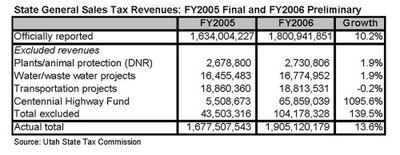Herriman City's Bad Idea: A Public Safety "User Fee"
Herriman City will be funding law enforcement by imposing a so-called “user fee” of $300 per year on all households and businesses that are connected to the city’s water system. Herriman City claims that this proposal is fairer than property taxes.
This is one of the worst ideas in municipal finance to come along in a very long time.
Despite Herriman’s claim, this is not a user fee. User fees are based on usage. If a household uses more water, they pay more water fees. However, the city’s proposed “user fee” isn’t based on usage because everyone pays the same. Besides, how would the city measure a household’s usage of public safety and law enforcement?
Herriman’s “user” fee is a regressive form of taxation, which means low income households end up paying a higher percent of their income in taxes. With property taxes, higher income households generally own larger homes which means they pay more property tax. Herriman somehow claims that a regressive fee is “fairer” than a property tax, which is not regressive.
At least with a true user fee based on actual usage, like water consumption, a household can reduce its usage of certain services, which is especially important to low income families who are trying to balance their budgets.
Does Herriman propose to fund all city government with so-called user fees? What about city administration? The fire department? Should these be funded by regressive taxes masquerading as “user” fees?
User fees, whether real or fake, are not deductible on state and federal income taxes like property taxes are.
While genuine user fees should be earmarked to cover the costs of providing services, other revenues should not be earmarked. Earmarking general taxes (or bogus “user fees” in this case) should be avoided since this reduces government’s ability to prioritize spending.
General government functions – like law enforcement – should be funded by general taxes. If Herriman needs additional funds for law enforcement, they should go through the Truth-in-Taxation process and explain to their taxpayers why they need to exceed the certified tax rate. That’s what other cities do.

